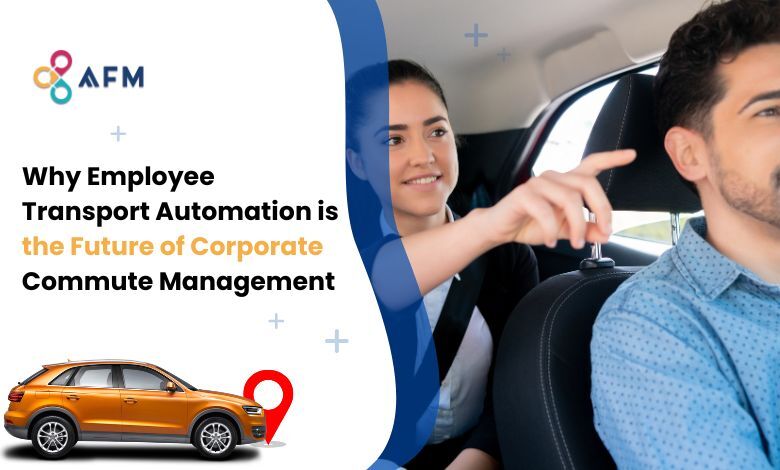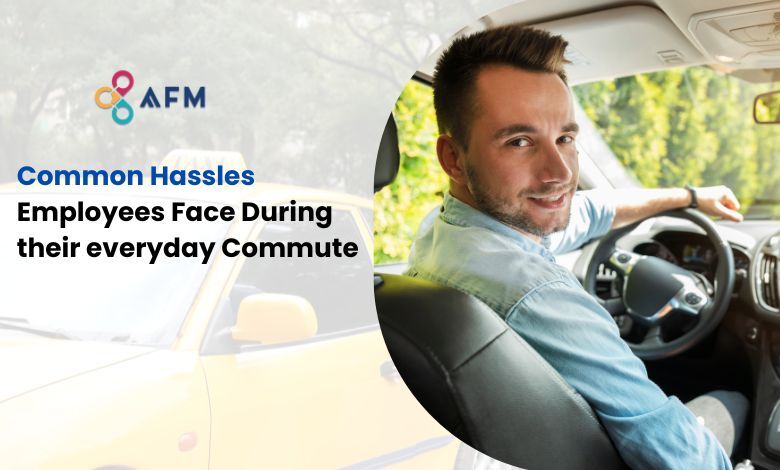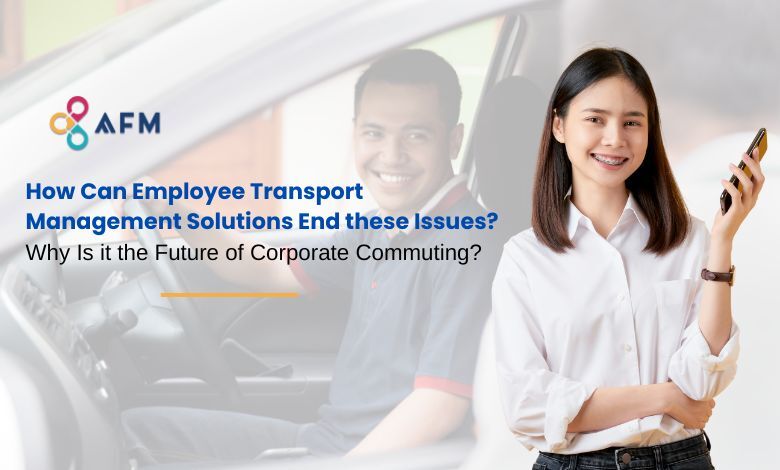Why Employee Transport Automation is the Future of Corporate Commute Management

For many employees, the daily commute is a source of constant frustration. Long hours spent stuck in traffic or waiting for late buses lead to fatigue and stress, while employers struggle with the repercussions of late arrivals and decreased accountability. This chaotic routine not only affects productivity but also diminishes workplace morale.
Employee transport automation software offers a seamless way to manage office commutes, ensuring reliable transportation, real-time monitoring, and efficient communication.
Read further to understand why this technology is the need of the hour for companies with a large pool of employees.
Common Hassles Employees Face During Their Everyday Commute

1. Unreliable Public Transportation
Employees who rely on public transit often face delays, cancellations, or overcrowded vehicles. This unreliability can result in longer commute times and increased frustration, as employees may have to adjust their schedules or find alternative transportation at the last minute.
2. Traffic
Traffic jams are a daily headache for many commuters. Delays can lead to significant time wasted, causing employees to arrive late. This unpredictability can affect work-life balance and make it difficult for employees to plan their day effectively.
3. High Commuting Costs
Commuting costs – whether through fuel costs, parking fees, or public transportation fares—can add up significantly. It can lead to dissatisfaction with their job if they feel their earnings are being drained by commuting costs.
4. Physical Fatigue
The strain of long hours spent sitting, especially in congested conditions, can lead to decreased productivity and overall well-being.
5. Safety Concerns
Issues such as poorly lit streets, lack of security on public transport/private cabs, or concerns about harassment can contribute to anxiety and fear, making the daily commute a more daunting experience, especially for female employees.
6. Manual Tasks
Managing employee transport can be a painstaking task that involves rostering, maintaining trip sheets & vendor records, vehicle allocation, billing and so much more. Much effort and time is taken up by manual tasks, leading to errors, confusion, and wastage of man hours.
How Can Employee Transport Management Solutions End these Issues? Why Is it the Future of Corporate Commuting?

1. Live Tracking
Live tracking features allow employers and employees to monitor the exact location of vehicles in real time. This transparency helps reduce anxiety about delays and provides reassurance to employees that they can plan their arrival times more effectively.
For instance, If an employee is waiting for their ride, they can see exactly when it will arrive and adjust their plans accordingly. Employers can also monitor their fleet and ensure that all employees are accounted for, minimizing the risks associated with tardiness and absenteeism.
2. Alarm & Panic Button Alerts
In the event of an emergency, employees can press a designated button within the app that sends an instant alert to their pre-selected emergency contacts or authorities, along with their real-time location.
The system can also include automated messages that inform others of the situation.
This feature instills a sense of security in employees, knowing they have immediate access to help if needed. It also demonstrates to employees that their safety is a priority for the company, which can foster loyalty and enhance overall job satisfaction.
3. Driver Face Recognition & Feedback
The feature allows employees to verify their drivers before entering a vehicle. This is another useful feature to build trust between employees and the transportation system.
By allowing employees to provide feedback on their drivers—such as comfort levels and overall experience—companies can maintain high standards for service quality. This two-way accountability encourages a culture of safety and reliability.
4. Emergency Contacts for SOS Alerts
This advanced feature lets commuters designate friends, family, or colleagues who can be notified in case of an urgent situation. Employees can easily add and manage emergency contacts within the commuting app. If they encounter trouble, they can send an SOS alert that automatically notifies these contacts along with the employee’s location. Along with these, there are numerous advanced employee safety features in an ETS that ensure a safe and worry-free commute.
5. The Tool Takes into Account Road Width, One-Way Routes, etc.
Advanced routing technologies account for road conditions, including road width, one-way streets, and traffic patterns. Integrating various data sources makes sure that transportation routes are optimized for safety and efficiency.
The system uses algorithms that analyze data from multiple mapping sources and traffic reports to generate the safest and quickest routes for drivers. This information can include details about road conditions, construction zones, and real-time traffic updates.
6. Traffic Patterns Based on Google as Well as Internal Database
By examining both external traffic data and internal usage patterns, the system can predict potential delays and recommend optimal commuting times or routes. This dual approach enables the solution to provide more accurate estimates of arrival times and improve planning.
Understanding traffic patterns helps companies manage expectations regarding commute times, reducing stress for employees and allowing them to plan their days better. For employers, this insight can lead to enhanced operational efficiency and a more satisfied workforce, making it clear that investing in commute management is a strategic move for the future of corporate commuting.
7. Streamlined Vehicle & Driver Compliance
An employee transport management software also takes care of vehicle compliance & maintenance through timely alerts, ensuring fewer breakdowns and saving hefty fines owing to compliance issues. It even keeps track of timely compliance and proper documentation of drivers to ensure that competent and verified drivers are entrusted with the vehicles.
8. Vehicle Allocation & Vendor Management
Automated vehicle allocation and vendor-ratio-based allocation of routes is a breeze with employee transport automation solutions. It takes into account vehicle type, capacity, and operational demands to ensure better vehicle efficiency and fleet optimization. Digitized trip sheets & automated billing, reduce the burden of transport managers significantly.
Conclusion
The future of corporate commute management lies in adopting innovative employee transport management solutions that prioritize employee safety, enhance fleet efficiency, and streamline operations through automation.
An advanced tool like AFM has various features that make travel hassle-free for your team leading to higher satisfaction and loyalty towards the organization. It reduces the burden of manual planning, saves cost and enhances efficiency manifold.
Contact us now to learn more about how our advanced employee transport management software can transform employee commute management for your organization!
FAQ’S
What is Corporate Commute Management Automation?
Corporate commute management automation refers to the use of technology to streamline and automate the scheduling, tracking, and management of employee transportation. It includes features like real-time tracking, route optimization, and automated reporting to improve efficiency, reduce costs, and enhance employee experience.
How does automation improve employee transport efficiency?
Automation optimizes routes, reduces manual intervention, and ensures better vehicle utilization. This leads to quicker, more efficient commutes, reducing both travel time and fuel costs. It also improves reliability, as real-time tracking allows for immediate response to delays or issues.
What are the cost benefits of automating employee transport?
Automating employee transport can reduce operational costs by eliminating inefficiencies such as underutilized vehicles, unnecessary administrative work, and fuel waste. Automated systems also allow businesses to scale more easily and provide more predictable budgeting for transportation needs.
Is employee transport automation safe for employees?
Yes, employee transport automation enhances safety by using features like real-time monitoring, GPS tracking, and driver behavior analysis. These systems help ensure that employees are traveling along optimized and safe routes, and emergency alerts are immediately sent if needed.
Can employee transport automation support sustainable practices?
Absolutely. Automated systems help businesses reduce their carbon footprint by optimizing vehicle routes, minimizing fuel consumption, and enabling the use of eco-friendly vehicles like electric cars or hybrids. This supports sustainability goals and makes corporate transport greener.
Quick Read:- Top 5 Employee Transport Management Features to Improve Efficiency and Enhance Employee Safety